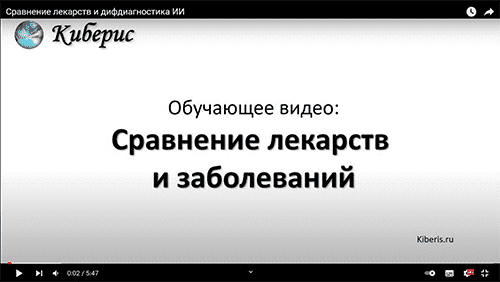Distinctive symptoms
Register , to see more distinctive signs of diseases and studies100% 39%
Register , to see more distinctive signs of diseases and studies— 62%
tendon contracture
48%
—
pfoundler 's disease —
47%
conflicts avoids
16%
—
gurler syndrome —
47%
dupuytren contracture
14%
—
frequent otitis —
46%
general narcosis
7%
—
umbilical hernia —
45%
hands are warm
6%
—
hernia of the abdomen —
41%
scarring
6%
—
enlargement of the liver and spleen —
41%
consequences of sprains
6%
—
curvature of the spine —
41%
patient is motionless
5%
—
contractures of the joints —
41%
violation of carbohydrate metabolism
5%
—
night apnea —
41%
ankylosis
5%
—
enlargement of the spleen —
40%
skin is tight
5%
—
joint deformation —
40%
limitation of the amplitude of movements
5%
—
otitis —
40%
violation of protein metabolism
5%
—
hepatosplenomegaly —
40%
wrist injury
5%
—
hump —
40%
scar pain
5%
—
respiratory arrest in a dream —
38%
sprains
5%
—
apnea —
38%
lung damage
4%
—
enlarged liver —
37%
caution
4%
—
hernia —
36%
heredity predisposition
4%
—
compression of the spinal cord —
36%
diabetes mellitus
4%
—
chronic otitis —
36%
changes in the blood
4%
—
hearing impaired —
34%
worse from movement
4%
—
heart dysfunction —
34%
conservative
4%
—
lumbar kyphosis —
33%
nerve damage
4%
—
hydrocephalus —
33%
pain when moving
4%
—
there is heart failure —
33%
skin problems
4%
—
heart failure —
33%
pain in the wrists
4%
—
joint diseases —
32%
thin skin
4%
—
lowered —
32%
polyneuropathy
4%
—
childhood diseases —
30%
presses
3%
—
corneal opacity —
30%
soreness of the skin
3%
—
inflammation —
30%
consequences of injuries
3%
—
bone deformation —
30%
acute condition
3%
—
muscle tension —
29%
wound
3%
—
cognitive disorders —
29%
a history of organ transplantation —
29%
impaired lung function —
28%
weakness in the leg muscles —
28%
neck is short —
28%
neurological disorders
3%
31%
deformation of the skull —
28%
stunting —
28%
stiffness in the joints
4%
32%
epilepsy —
27%
delayed speech development —
27%
retinal dystrophy —
27%
skeletal deformity —
27%
hypertrophy of the tonsils —
27%
increased —
27%
consequences of taking medications —
27%
deformities of the limbs —
26%
kyphosis scoliosis —
26%
stage of recovery —
26%
angioplasty —
26%
stooped —
26%
convulsions —
26%
weakness in the legs —
26%
children's speech —
26%
recovery period —
26%
metabolic disorder —
25%
lags behind in the development —
25%
coarsening of facial features —
25%
laryngeal tonsils —
25%
delay of mental development —
25%
muscle weakness —
25%
inguinal hernia —
25%
morchio 's disease —
25%
history of surgery
6%
31%
patient's condition
3%
27%
decreased intelligence —
24%
leg weakness walking —
24%
myelopathy —
24%
curvature of the legs —
24%
scoliosis —
24%
chest deformity —
24%
pigmented glaucoma —
24%
ventriculitis —
24%
plump lips —
24%
valgus deformity of the foot —
23%
stiffness of the hands —
23%
frequent colds —
23%
stiffness in the wrists —
22%
lack of breath —
22%
polyarthritis —
22%
hypertension —
22%
otitis media due to a runny nose —
22%
spondylopathy —
22%
nose pulmonary heart —
22%
clumsiness —
22%
epilepsy attacks —
22%
sanfilippo syndrome —
22%
dystrophy —
22%
swelling —
22%
macrocephaly —
21%
loss of balance —
21%
deformity of the foot —
21%
compression myelopathy —
21%
prosthetic leg —
21%
height is low —
21%
weakness after illness —
21%
pain in jaw joints —
20%
hypersthenic —
20%
pronounced neck rigidity —
20%
frequent runny —
20%
joint replacement in the anamnesis —
20%
tendon compaction —
20%
tension in the face —
20%
shroud —
20%
pregnancy —
20%
arthritis —
19%
underdevelopment —
19%
weakness of the bladder —
19%
nose large eyes —
19%
alpha-mannosidosis —
19%
impaired coordination —
19%
glaucoma —
19%
orthopedic implant —
19%
big nose —
18%
shortening of legs —
18%
hollow foot —
18%
s eyes cloudy —
18%
angiopathy —
18%
calve's disease —
18%
epiphyseal dysplasia —
18%
stiffness in the jaw —
18%
corneal thickening —
18%
knee joint contracture —
18%
postencephalitic syndrome —
18%
tonsillectomy —
18%
pain in the bridge of the nose —
18%
periods of exacerbation —
18%
drug disease
3%
21%
stiffness in the back —
18%
thoracic kyphosis —
18%
tonic-clonic convulsions —
18%
damage to the nervous system —
18%
violation of the function of the tonsils —
17%
tension in the spine —
17%
sensorineural —
17%
osteochondropathy —
17%
respiratory insufficiency —
17%
inguinal hernia surgery —
17%
increased hairiness —
17%
restless hands —
17%
contracture of the lower jaw —
17%
up circulatory disorders —
17%
cardiodilation —
17%
otitis media —
17%
otitis media unspecified —
17%
control issues —
17%
chronic respiratory failure —
17%
hypertrophy of the palatine tonsils —
17%
generalized epilepsy —
17%
joints unstable —
17%
hypertrophic rhinitis —
17%
clonic cramps —
17%
contracture of the hands
8%
24%
laryngeal stenosis —
16%
flat feet —
16%
absences —
16%
tension of the eye muscles —
16%
mitral heart defects —
16%
psyche regrets —
16%
mitral stenosis —
16%
forced exhalation volume is reduced —
16%
psychologist —
16%
sensations in the neck —
16%

